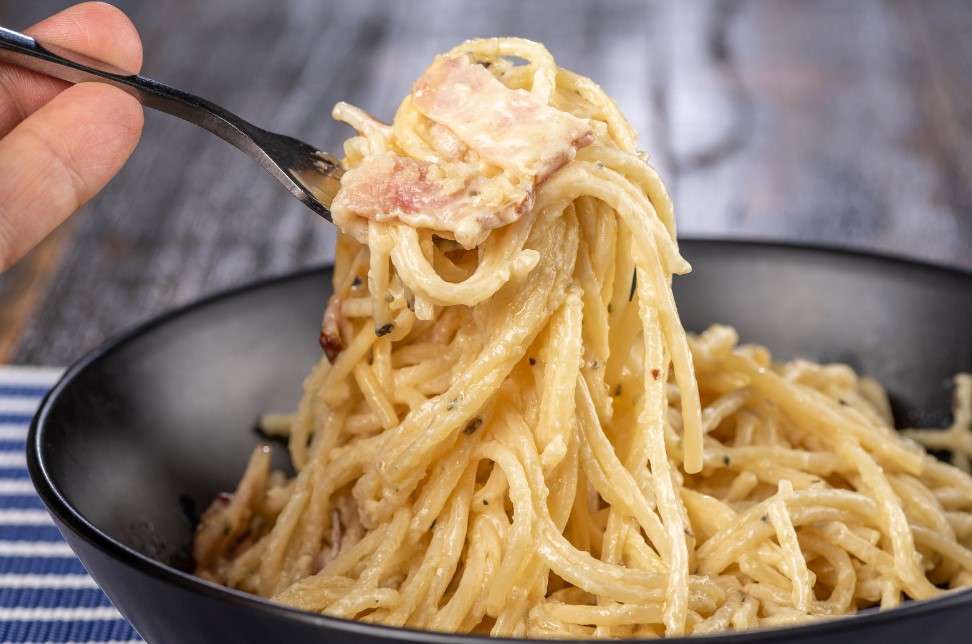Kitchen Chat: Gender in Italian – Stories for Beginners
Ciao a tutti! Today, we’ll dive into the delightful world of Italian cuisine and unravel the gender rules in Italian grammar. You’ll listen to a conversation set in a cooking class where students learn about iconic Italian dishes. Let’s get started!
Lesson Key Takeaways
- Basic Italian vocabulary related to cooking and food.
- Understanding the use of masculine and feminine nouns in Italian.
- Cultural appreciation of Italian cuisine.
Dialogue Transcript (Italian and English)
| Italian | English |
|---|---|
| Buongiorno a tutti! | Good morning, everyone! |
| Benvenuti alla classe di cucina italiana. | Welcome to the Italian cooking class. |
| Oggi prepareremo la pasta alla carbonara! | Today, we will prepare pasta alla carbonara! |
| Sono entusiasta! Cos’è il primo passo? | I’m excited! What’s the first step? |
| Prima, prepariamo gli ingredienti. | First, let’s prepare the ingredients. |
| Abbiamo gli spaghetti, l’uovo, il pecorino romano, e il guanciale. | We have spaghetti, egg, pecorino romano, and guanciale. |
| Il guanciale è simile alla pancetta? | Is guanciale similar to pancetta? |
| Sì, ma il guanciale è più saporito. | Yes, but guanciale is more flavorful. |
| Ora, rompiamo l’uovo in una ciotola grande. | Now, let’s break the egg into a large bowl. |
| Questo piatto sembra semplice ma delizioso! | This dish seems simple but delicious! |
Grammar and Vocabulary Notes

In this segment, we’ll dive into the essential terms from our conversation. These concise notes offer the necessary insights to comprehend and effectively utilize these expressions.
- Buongiorno (Good morning): A common Italian greeting. “Buongiorno” is used in formal or informal contexts, typically in the morning. Learn how to say good morning in Italian.
- Benvenuti (Welcome): A plural and masculine greeting, used when addressing a mixed or all-male group. Reflects the agreement of adjectives with the gender and number of the noun.
- Classe (Class): A feminine noun, “la classe,” typically used to refer to an educational setting or group.
- Cucina (Cooking/Kitchen): Feminine noun for the kitchen or the act of cooking. Central to Italian culture, representing both the physical space and the culinary activity. Related reading: discover the best Italian kitchen brands.
- Ingredienti (Ingredients): Plural masculine noun, used to discuss various components in a recipe. Highlights the pluralization rules in Italian.
- Prepareremo (We will prepare): Future tense of “preparare,” indicating an action that will take place. Demonstrates how verbs change according to tense in Italian.
- Entusiasta (Excited): An invariable adjective, meaning its form doesn’t change whether used in a masculine or feminine singular context.
- Primo passo (First step): Composed of masculine nouns “primo” and “passo.” It’s a common phrase used to indicate the beginning of a process or action.
- Saporito (Flavorful): A masculine singular adjective, often used to describe tasty food. Shows how adjectives agree with the gender and number of the nouns they describe.
- Ciotola (Bowl): Feminine singular noun, “la ciotola,” commonly used in cooking contexts. Demonstrates the gender-specific articles in Italian.
Gender in Italian Grammar: Rules to Remember

Italian gender rules, as explained in many Italian grammar books, are essential to the structure of Italian grammar, influencing how nouns, adjectives, and articles are used.
Rule to Remember: Every noun in Italian is either masculine or feminine, which determines the form of the articles and adjectives used with it.
For instance, masculine nouns like “ingrediente” (ingredient) change to “ingredienti” in the plural, while feminine nouns like “ciotola” (bowl) become “ciotole.”
In Italian grammar, the gender of nouns often follows patterns, such as nouns ending in -o being typically masculine (il libro, “the book”) and those in -a being usually feminine (la casa, “the house”).
However, there are exceptions and irregularities, like “la mano” (the hand), a feminine noun despite ending in -o.
Rule to Remember: Adjectives must agree in gender and number with the nouns they describe, like “saporito” (flavorful, masculine singular) or “saporita” (flavorful, feminine singular).
Understanding these rules is critical to forming correct sentences in Italian, contributing to the language’s complexity and beauty.
Cultural Insights

In today’s lesson, we explored the preparation of pasta alla carbonara, a classic example of Italian culinary simplicity and excellence.
With its few but high-quality ingredients, this dish exemplifies a cornerstone of Italian cuisine: the harmony of flavors achieved with minimalism.
Each ingredient, from the robust guanciale to the delicate pecorino romano, plays a distinct role, mirroring the Italian approach to life where every detail matters.
Understanding this dish’s composition also offers a glimpse into Italian culture’s emphasis on regional specialties.
Suggested Read: 10 Traditional Italian Pasta Dishes You Must Try
As you learn the gender of each ingredient in Italian, remember that these linguistic nuances reflect a more profound cultural appreciation for food, where every element, whether in language or cuisine, is chosen with intention and care.
Review and Recap
In the previous lesson, we introduced our new beginner Italian course, “Learn Italian with Stories,” starting with a dialogue about vacation plans.
In today’s lesson, we immersed ourselves in key Italian terms related to cooking, grasping the vital concept of gender agreement in nouns and adjectives.
Stay tuned for our next exploration into the fascinating nuances of articles in Italian grammar.
Before You Go…
Interested in more Italian dining etiquette? Discover the ins and outs of coperto in Italy with our guide on cover charges and tipping.





